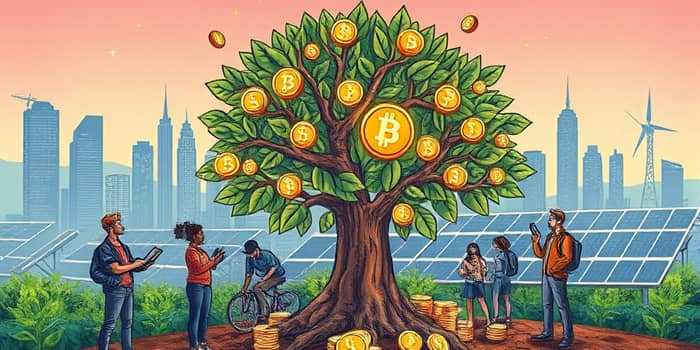
In an era marked by rapid change and pressing global challenges, investors are increasingly seeking pathways that marry profitability with purpose. By embracing ethical, environmental, and social standards, this modern approach redefines success for the 21st century.
At its heart, integrity-driven investing means aligning financial decisions with ethical values. Rather than focusing solely on short-term gains, investors evaluate environmental, social, and governance (ESG) factors to guide long-term capital deployment.
Recent surveys reveal that 89% of investors consider ESG factors in their portfolio choices, while 83% of consumers expect companies to actively shape best practices. This shift underscores a collective demand for transparency, accountability, and long-term social impact and accountability in business models.
The sustainable investing universe has expanded dramatically. In early 2025, sustainable funds’ assets under management reached an all-time high of $3.92 trillion, representing 6.7% of global AUM. This marks a seismic shift as capital flows align with values and planetary health.
Beyond fund metrics, ESG-aligned assets across equities, bonds, and alternative vehicles have topped $18 trillion worldwide. Industry forecasts anticipate these assets to be projected to reach $35 trillion and account for half of all professionally managed investments by the end of 2025.
Community Development Financial Institutions have also surged, demonstrating grassroots impact. With a 615% growth since 2014, CDFIs now manage $458 billion, channeling finance into underserved communities and driving equitable development.
Data debunks the myth that sustainable investing sacrifices returns. In the first half of 2025, sustainable funds posted a median return of 12.5% versus 9.2% for traditional funds. Since December 2018, cumulative returns stand at 54% for ESG-focused vehicles, outpacing the 45% of conventional counterparts.
This outperformance is often credited to broader exposure in European and global markets. Europe commands 88% of sustainable fund AUM, while 92% of these funds generated positive returns, demonstrating sustainable funds’ resilience and growth.
Capital flows into ESG vehicles vary across regions. While Europe remains dominant, other markets are charting their own paths:
The sustainable investing landscape is dynamic, shaped by regulation, technology, and thematic priorities. Key trends include:
Stewardship also takes center stage, with $41.5 trillion (79% of U.S. assets) guided by active shareholder advocacy and engagement policies.
Despite momentum, obstacles persist. Political headwinds in the U.S. have sparked anti-ESG rhetoric, while skepticism about greenwashing and inconsistent reporting undermines trust. Key pain points include:
Addressing these barriers requires harmonized frameworks, enhanced data transparency, and robust regulatory alignment across jurisdictions.
Looking forward, the fusion of purpose and profit offers immense potential. Impact investing, which 36% of respondents now prioritize, is set to accelerate as investors seek measurable social and environmental outcomes alongside returns.
Technological breakthroughs in AI, big data, and blockchain will drive impact investing and technological innovation, improving impact assessment and optimizing capital allocation. Meanwhile, climate action and clean energy remain top thematic drivers under SDGs, providing both growth and environmental benefit.
Global calls for harmonized ESG standards, combined with evolving policy frameworks—especially in Europe—and increasing corporate transparency, signal a maturing market. For forward-thinking investors, these developments create a blueprint for sustainable value creation.
By integrating integrity into every decision, we can build portfolios that not only generate returns but also foster positive change. Together, investors and companies can partner to build a more sustainable future, ensuring financial prosperity goes hand in hand with social and environmental stewardship.
References





